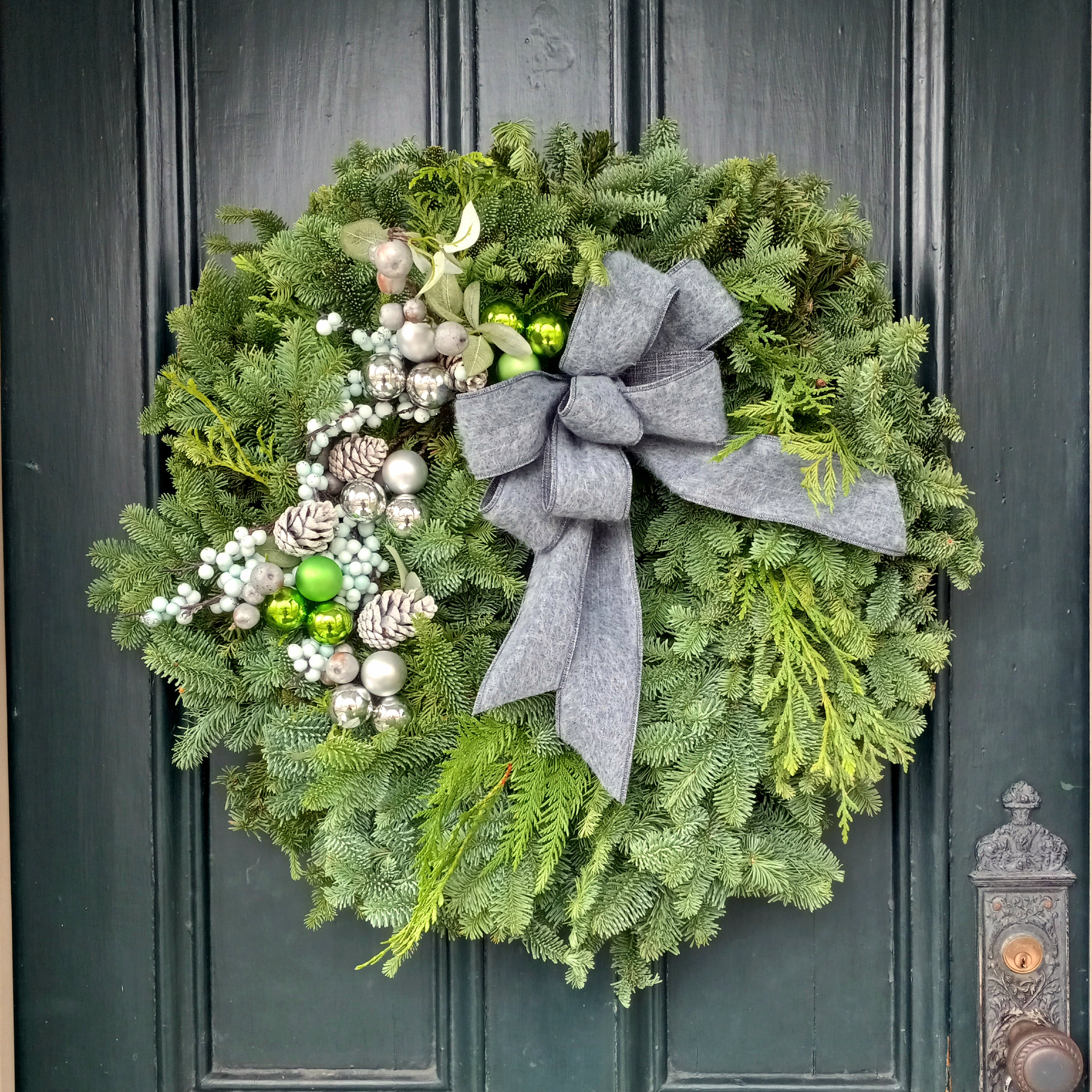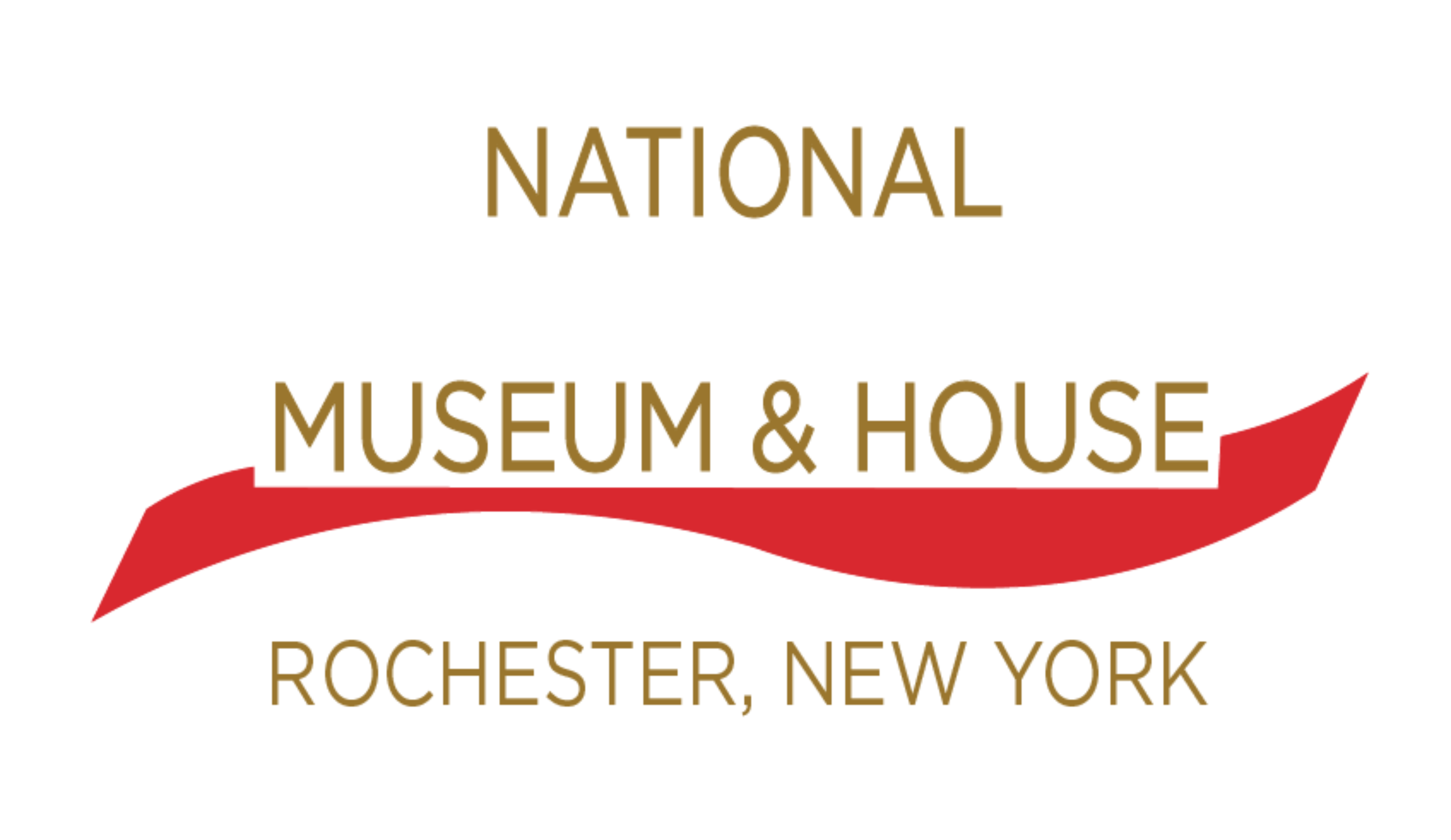A Season with Susan

This year we were honored by the gift of a gorgeous green and silver wreath that now festoons the front door of the Susan B. Anthony House. It is difficult to imagine what Susan herself might have said about it, since there were few recorded years where Susan chose to decorate 7 Madison Street for the season. In keeping with the style of the Society of Friends (which you might know as the “Quakers”), the Anthony family celebrated the holidays a little differently than expected; there were no elaborate adornments, no tree in the parlor, and certainly no cookies left out for Santa Claus.
Then and now, members of the Society of Friends were known for their subdued celebrations, “With no minister, no program and no choir, the Quaker congregation will sit quietly in a room lit by a fireplace and candles…the entire four-hour service could pass without a sound.” (Virginian Pilot) Many Quakers tend to downplay the showier side of festivities, instead focusing on cultivating goodwill, peace, and community spirit even during the cold New York winter. Mr. and Mrs. Anthony raised their children in a branch of the Friends that emphasized simplicity, equality, and good action toward others, but certainly did not shy away from celebrating the holidays with gusto. The most notable deviance from cultural norms would likely have been their toast to the New Year — completely devoid of alcoholic beverages! In the Anthony House today, there is still preserved a velvet cloak which Susan received as a holiday gift from Mrs. Emily Gross, all the way from Chicago. Throughout Susan’s writings, we find her thanking various friends for shawls and fruit cakes around the holidays, but most of all we hear Susan and her closest allies speaking of how the work must go on, even on Christmas Morning. The Anthonys surely celebrated every day of the season as an opportunity to do good.
In reality, Americans during Susan’s childhood were just beginning to celebrate the holidays as we know them today, with Charles Dickin’s beloved A Christmas Carol published in 1843, and the iconic Christmas tree only gaining popularity after the Civil War. Life in the Antebellum period startled Americans. The United States were not as safe and warm as some had thought, but “At this cross-roads of progress and nostalgia, Americans found in Christmas a holiday that ministered to their needs.” (History Today) Practitioners of many religions joined in this nationwide joy, bringing a variety of traditions together under the snowy blanket of the “holiday season”.
Christmas Eve is a simple celebration for Quakers, The Virginian Pilot
Christmas in 19th Century America, History Today

